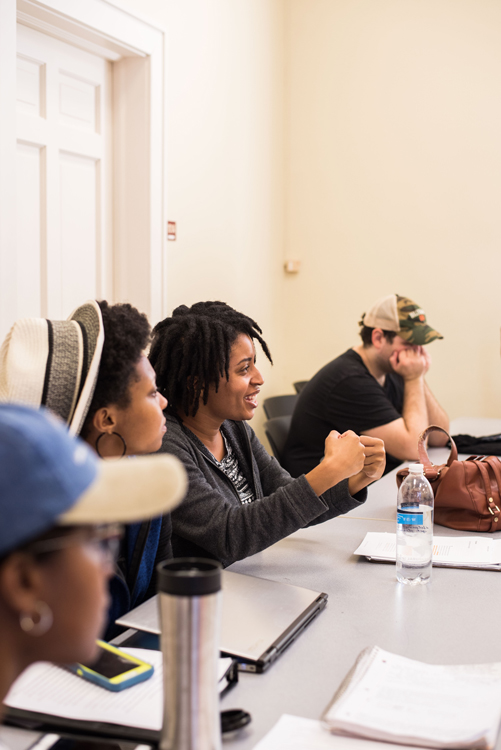Teach students to collaborate before expecting success.
Doing group work, peer review, and other collaborative activities without prior training can lead to confusion and dead time in class. For maximum success, teach collaboration skills before starting group projects.

ONE IDEA: Introduce peer review workshops at the beginning of the semester using a Fish Bowl approach. Then ask students to critique the modeled peer review session and create a set of class rules for peer review.
Use Quick Writes to fill dead time and to encourage student reflection.
To avoid dead time while waiting for all groups to finish their work or to follow up a lecture or group activity, ask students to do quick writing activities, such as “What was confusing?” or “What was interesting or boring about ___?” Other such prompts might include “Summarize what you heard or what your group did,” or “Predict a quiz question I could ask based on this material,” or “Defend one of the positions you read about last night or that we discussed in class today.”
Give clear instructions for class activities.
To avoid chaos, divide students into groups, give them clear directions for the activity (on a handout or written on the board), and then assign them to a meeting location within the classroom. Make sure they understand what they are expected to do and their time frame for getting the work done. Allow no more time than needed.
Design group work so that each member of the group has something to do and is accountable for the work.
For instance, ask each member to answer 2-3 questions individually and then discuss and arrive at a consensus for each answer. Ask each group member to make a list of different examples.
Mix up your teaching styles.
Keep students interested and involved by moving back and forth between student-centered learning and teacher-centered learning. Divide your lessons into modules of about 15-20 minutes each. If you lecture, don’t lecture for an entire class period. Break it up with some group work, some in-class writing, some class discussion, etc. Use the board to list what students say or for letting students report on their group work or class activities.
Using multimedia also helps to keep students alert and engaged. Just make sure that you explain the context for each module so that students understand why they are doing what they are doing during each part of class.
This post was adapted from the article “Your Attention, Please!” on edutopia.org.